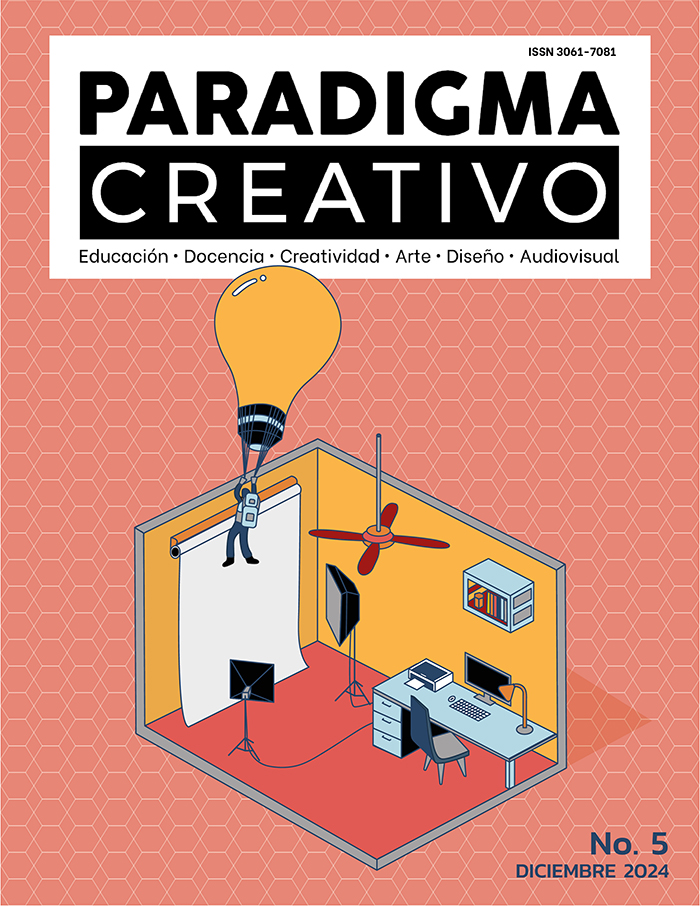Desde la perspectiva de una estudiante de diseño gráfico: Causas y consecuencias del plagio en el ámbito académico
DOI:
https://doi.org/10.29105/pc.v5i1.48Palabras clave:
plagio, diseño gráfico, estudiantesResumen
El plagio se ha vuelto común en diversas áreas, especialmente en diseño gráfico. La creciente presión por innovar en un entorno competitivo ha llevado a más copias directas. Muchos diseñadores se inspiran en el trabajo de otros, lo que a veces resulta en imitaciones, ya sea de forma ocasional o incluso incidental. Esto es frecuente entre estudiantes de diseño, generando inquietud entre docentes y profesionales, quienes a menudo analizan el problema desde su propia perspectiva, sin comprender siempre las causas detrás de esta conducta en los estudiantes. Este artículo busca explorar el plagio desde la perspectiva estudiantil, abordando las causas que motivan esta situación, la frecuencia con la que ocurre, ¿por qué resulta tan fácil de realizar? y la falta de información sobre el tema.
Descargas
Citas
Álvarez Pérez, P. R., González Afonso, M. C., & López Aguilar, D. (2009). La enseñanza universitaria y la formación para el trabajo: Un análisis desde la opinión de los estudiantes. *Paradigma (Maracay)*, 30(2), 7–20. https://ve.scielo.org/scielo.php?script=sci_arttext&pid=S1011-22512009000200002
Balbuena, P. (2003). El plagio como ilícito legal. *Revista Ventana Legal* (en línea). Recuperado el 18 de diciembre del 2024, de http://www.ventanalegal.com/revista_ventanalegal/plagio_ilicito.htm
Bisbe, J. (2022). Identificando el factor de estrés en la educación en diseño: Exploración sobre las posibles causas de estrés en el grado en diseño. Estudio de caso ELISAVA. *grafica*, 10(20), 105–112. https://doi.org/10.5565/rev/grafica.216 DOI: https://doi.org/10.5565/rev/grafica.216
Busquets, C. (2019, noviembre 22). Síndrome del impostor: qué es y cómo superarlo —. *uiFromMars*. https://www.uifrommars.com/sindrome-del-impostor/
C3tecEdu. (2024, abril 22). La creatividad en el Diseño Gráfico. *Ceutec; Centro Universitario Tecnológico*. https://ceutec.hn/la-creatividad-en-el-diseno-grafico/
Chen, C. (2016, marzo 16). El conocimiento es poder. *Cultura Genial*. https://www.culturagenial.com/es/el-conocimiento-es-poder/ de la Información, R. E. P. P. la E. de B. y. C. (s/f). *E-Ciencias de la Información*. Ugr.es. Recuperado el 19 de diciembre de 2024, de https://www.ugr.es/~plagio_hum/Documentacion/06Publicaciones/ART003.pdf
De la inspiración al plagio - Diseño web - Diseño gráfico - Programación web - Marketing online. (2012, febrero 1). Diseño web - Diseño gráfico - Programación web - Marketing online. https://www.ixotype.com/diseno-grafico-logo-de-la-inspiracion-al-plagio/
Estrada, H. (s/f). Pero… ¿qué es el diseño gráfico? *Foroalfa.org; FOROALFA.* Recuperado el 19 de diciembre de 2024, de https://foroalfa.org/articulos/pero-que-es-el-diseno-grafico
Grachiano. (2024, septiembre 6). El plagio en el diseño gráfico: Cómo evitarlo y enfrentarlo legalmente. *La Divina Proporción; La Divina Proporcion.* https://ladivinaproporcion.es/el-plagio-en-el-diseno-grafico-como-evitarlo-y-enfrentarlo-legalmente/
Jimenez, D. G. (s/f). DELITO DE PLAGIO. *Garrido y Doñaque.* Recuperado el 1 de noviembre de 2024, de https://www.garridoydonaque.com/blog/delito-plagio-trabajos-academicos-casos-graves/
La RAE, S. (s/f). ¿Qué es plagio? *Ehu.eus.* Recuperado el 1 de noviembre de 2024, de https://www.ehu.eus/documents/1738121/0/Plagio.pdf/1bdc46bf-6b8b-5135-c2cd-565f6522668a?t=1530536522000
Las Consecuencias del Plagio. (2021, febrero 9). *Plag.co; Detector de Plagio Viper.* https://plag.co/plagiarism/consequences-of-plagiarism.php
Mitjana, L. R. (2020, enero 22). Sesgo de la normalidad: qué es y cómo nos afecta. *pymOrganization.* https://psicologiaymente.com/psicologia/sesgo-normalidad
Pérez, A. (2018, mayo 11). La importancia de la creatividad en el diseño gráfico. *ESDESIGN.* https://www.esdesignbarcelona.com/actualidad/diseno-grafico/la-importancia-de-la-creatividad-en-el-diseno-grafico
Ridge, B. V. (2024, febrero 19). Artículo: Las implicaciones legales de copiar un logo sin autorización. *MEDIUM Multimedia Agencia de Marketing Digital.* https://www.mediummultimedia.com/diseno/que-pasa-si-copio-un-logo/
Rubio, N. M. (2022, febrero 2). Sesgo de disponibilidad: qué es y cómo nos afecta. *pymOrganization.* https://psicologiaymente.com/psicologia/sesgo-disponibilidad
Todo, V., Mansur, E. V., & Chuey, J. (s/f). Creatividad y complejidad en el pensamiento de diseño. *Unam.mx.* Recuperado el 19 de diciembre de 2024, de https://revista925taxco.fad.unam.mx/index.php/2023/11/30/creatividad-y-complejidad-en-el-pensamiento-de-diseno/
Wichniak, A., Wierzbicka, A., & Jarema, M. (2021). Treatment of insomnia – effect of trazodone and hypnotics on sleep. *Psychiatria polska,* 55(4), 743–755. https://doi.org/10.12740/pp/125650 DOI: https://doi.org/10.12740/PP/125650
(S/f-a). Rae.es. Recuperado el 19 de diciembre de 2024, de https://www.rae.es
(S/f-b). Redalyc.org. Recuperado el 19 de diciembre de 2024, de https://www.redalyc.org/pdf/801/80120703.pdf
(S/f-c). Deividart.com. Recuperado el 19 de diciembre de 2024, de https://www.deividart.com/blog/la-salud-mental-en-diseno-grafico/
24. (S/f-b). Ciinsev.com. Recuperado el 19 de diciembre de 2024, de https://revista.ciinsev.com/assets/pdf/revistas/REVISTA8/5.pdf
Descargas
Publicado
Cómo citar
Licencia
Derechos de autor 2024 Rubí Esmeralda Meléndez Córdova

Esta obra está bajo una licencia internacional Creative Commons Atribución 4.0.
Los autores/as que publiquen en esta revista aceptan las siguientes condiciones:
a. Los autores/as conservarán sus derechos de autor y garantizarán a la revista el derecho de primera publicación de su obra, el cual estará simultáneamente sujeto a la Licencia Creative Commons Atribución 4.0 Internacional. que permite a terceros compartir la obra siempre que se indique su autor y su primera publicación esta revista.
b. Los autores/as pueden realizar otros acuerdos contractuales independientes y adicionales para la distribución no exclusiva de la versión del artículo publicado en esta revista (p. ej., incluirlo en un repositorio institucional o publicarlo en un libro) siempre que indiquen claramente que el trabajo se publicó por primera vez en esta revista.
c. Se permite y recomienda a los autores/as a publicar su trabajo en Internet (por ejemplo en páginas institucionales o personales) posterior al proceso de revisión y publicación, ya que puede conducir a intercambios productivos y a una mayor y más rápida difusión del trabajo publicado.




